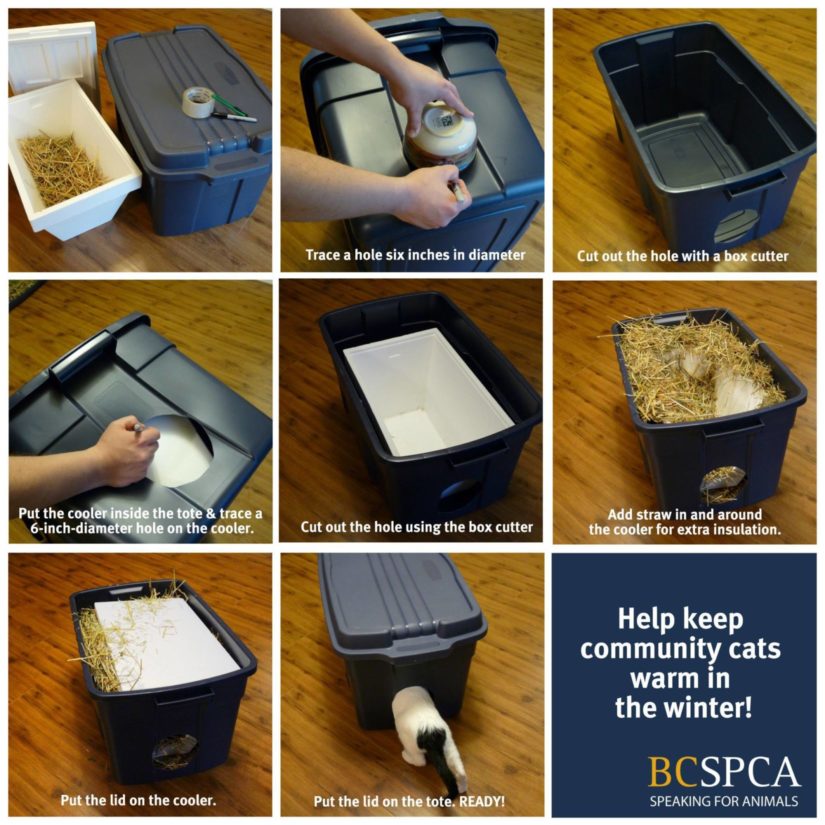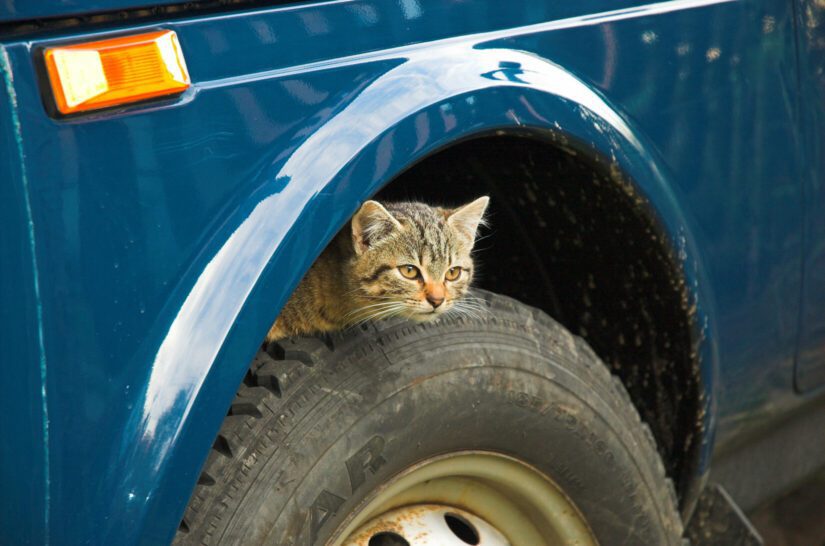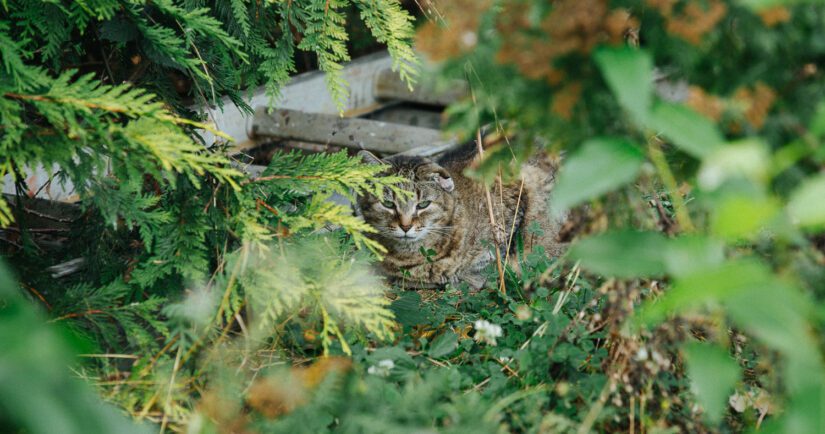Outdoor cats live in communities across B.C. Some have guardians but, sadly, many do not. Whenever possible, we look to trap, spay/neuter and re-home unowned community cats and recommend that pet cats be kept indoors for their own health and safety.
Some community cats, however, have been born and raised outdoors and never socialized to live with people. As a result, they feel at home outside and would not do well in a shelter or home environment. Yet they still require specialized support because of the hazards they face outdoors — particularly during the winter.
Cats can struggle through the coldest months of the year to find enough food, water and shelter, and are vulnerable to frostbite. If you have unsocialized outdoor cats in your neighbourhood, here are some steps you can take to help them stay warm and safe as the temperatures drop.
1. Build a shelter
A little DIY can go a long way! Help cats escape the wind, snow and rain and make it safely through the coldest months by making a winter shelter. This simple, low-cost solution that uses plastic totes provides a place for them to stay warm and dry and avoid frostbite. Plus, it’s a fun activity for young and old alike.

Watch the “how-to” instructional video below!
2. Ensure access to food and water
Water sources and wet food can easily freeze over in winter. When you put out water for cats, check it twice daily to make sure it stays ice-free. Choose dry kibble and ceramic or plastic dishes. The dishes should be placed near, but not inside shelters, in case they get spilled. Damp bedding makes it colder for cats, so replace wet materials inside the shelter with dry as often as possible.
Always remember to remove the food once cats are done eating to prevent attracting wildlife.
3. Tap your car hood
Keep in mind that in the winter months, outdoor cats (and wildlife) may see your car as a warm refuge. Before starting your vehicle, ‘think and thump’ — tap the hood and check between the tires to make sure no cats are hiding underneath or camping out in the engine compartment.

4. Spay and neuter
Trap-neuter-return (TNR) doesn’t just help manage a feral cat populations, it also improves the health and well-being of each cat in the community. Reducing their desire to roam is beneficial for their safety and, with decreased competition for mating, cats are less likely to suffer injuries from fighting.
Contact your local SPCA or cat rescue for advice on how to humanely and safely trap a feral cat. They may even have a trap loan or TNR program to assist you.
Tens of thousands of cats and kittens live outdoors in B.C., at risk of illness, injuries, starvation, frostbite and predator attacks. Using the TNR method is just one of the ways the BC SPCA is working to help tackle the cat overpopulation crisis.
Additional resources:
- Solving cat overpopulation
- More info on cat welfare
- How you can help feral cats in your neighbourhood

